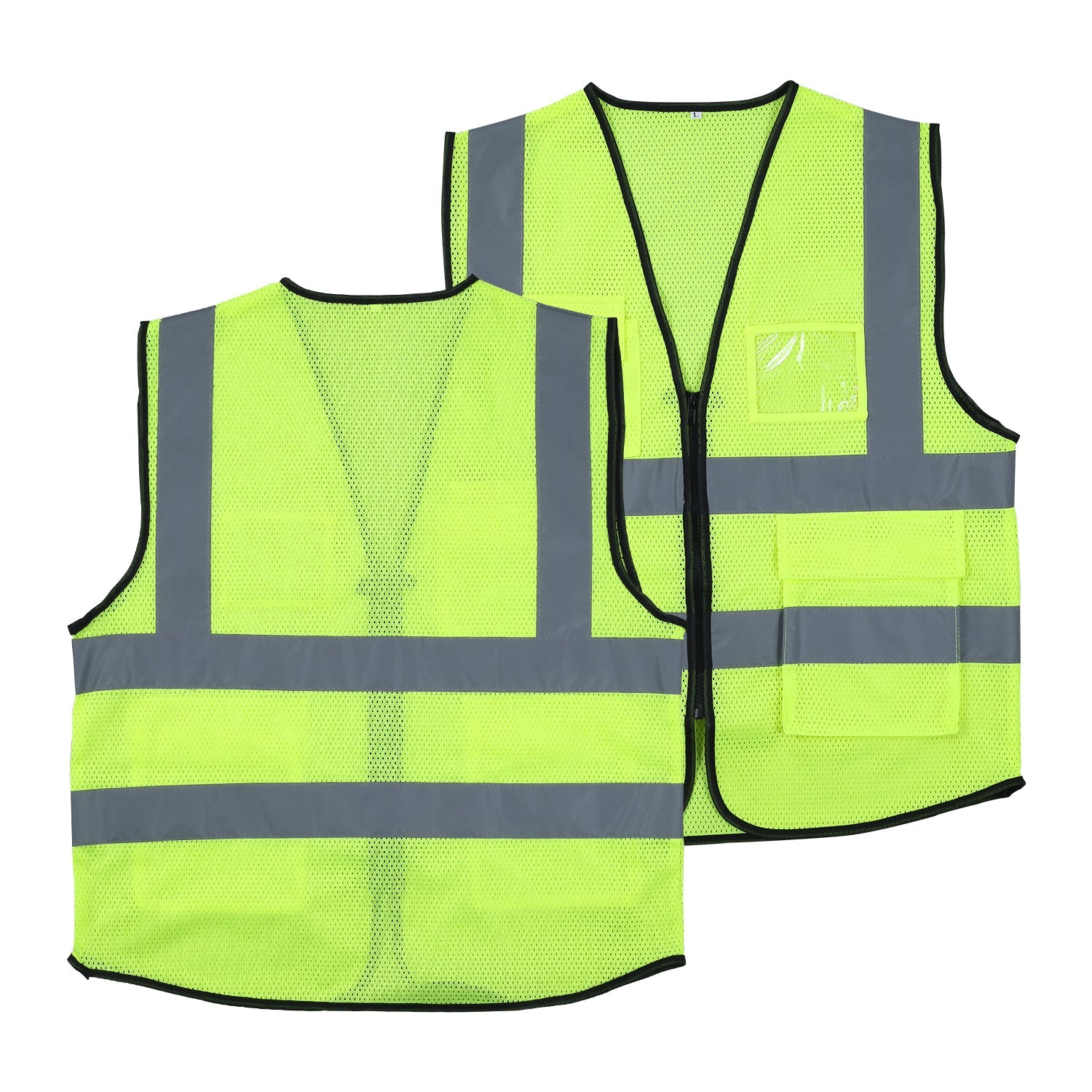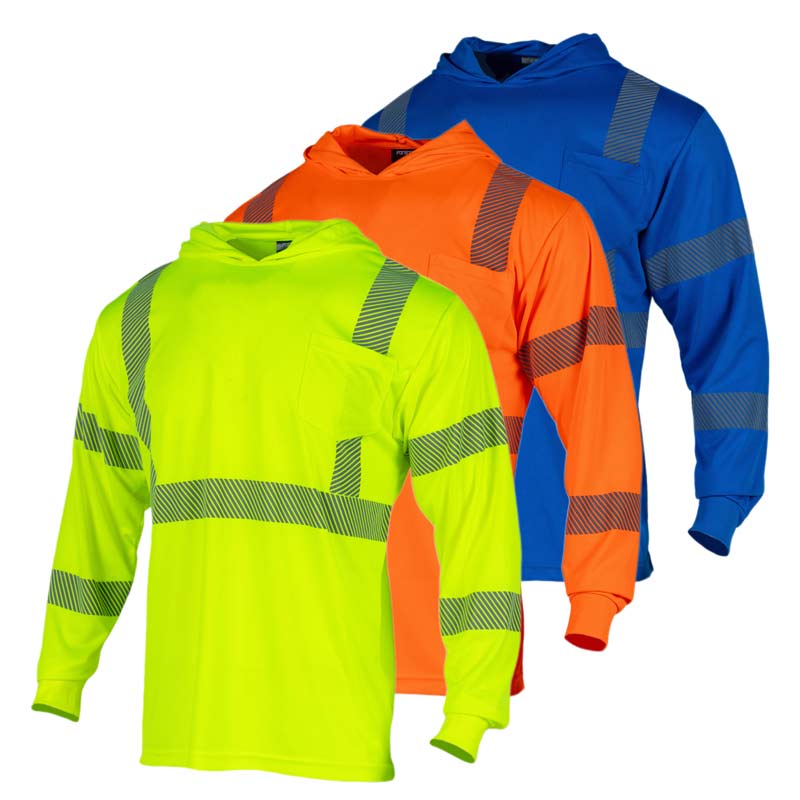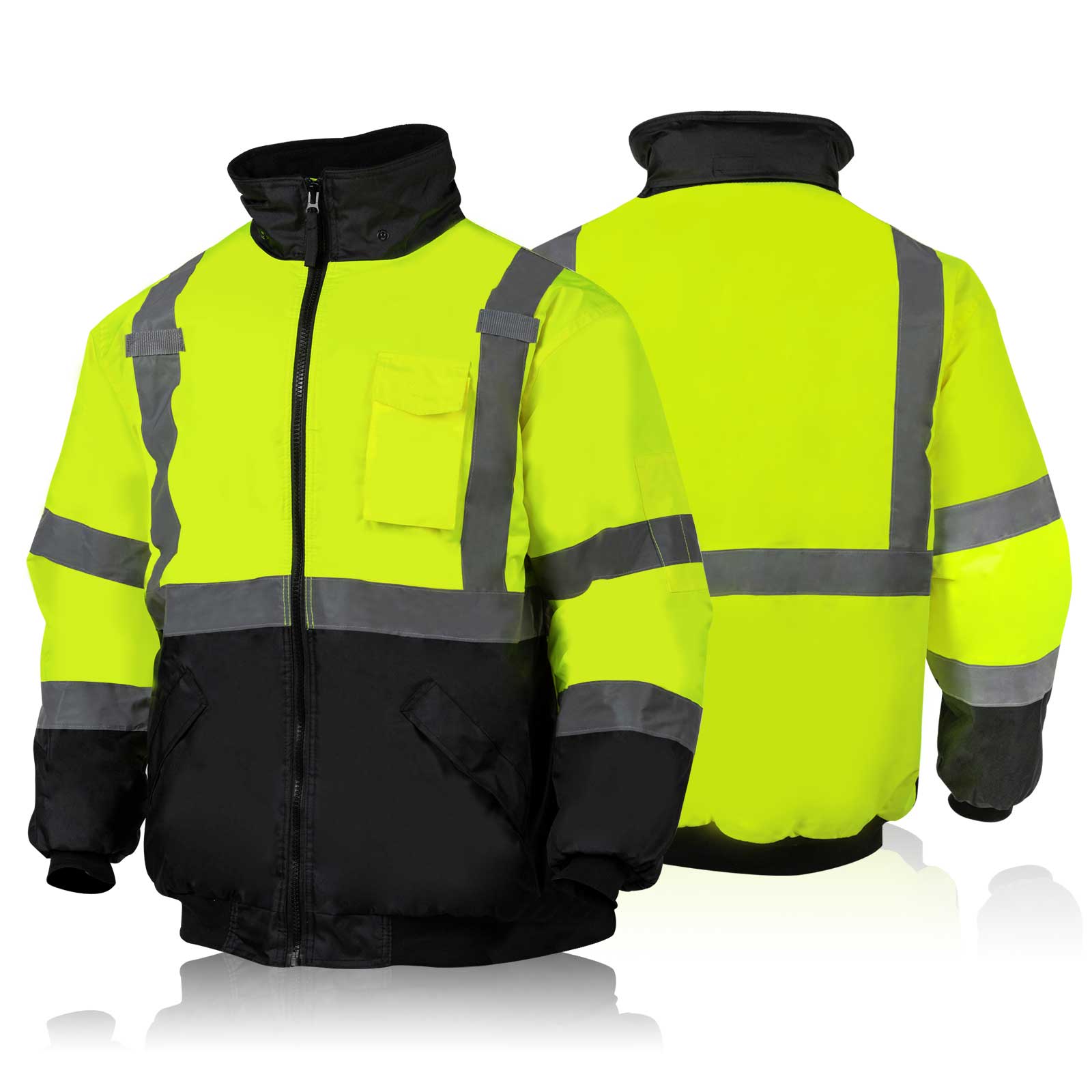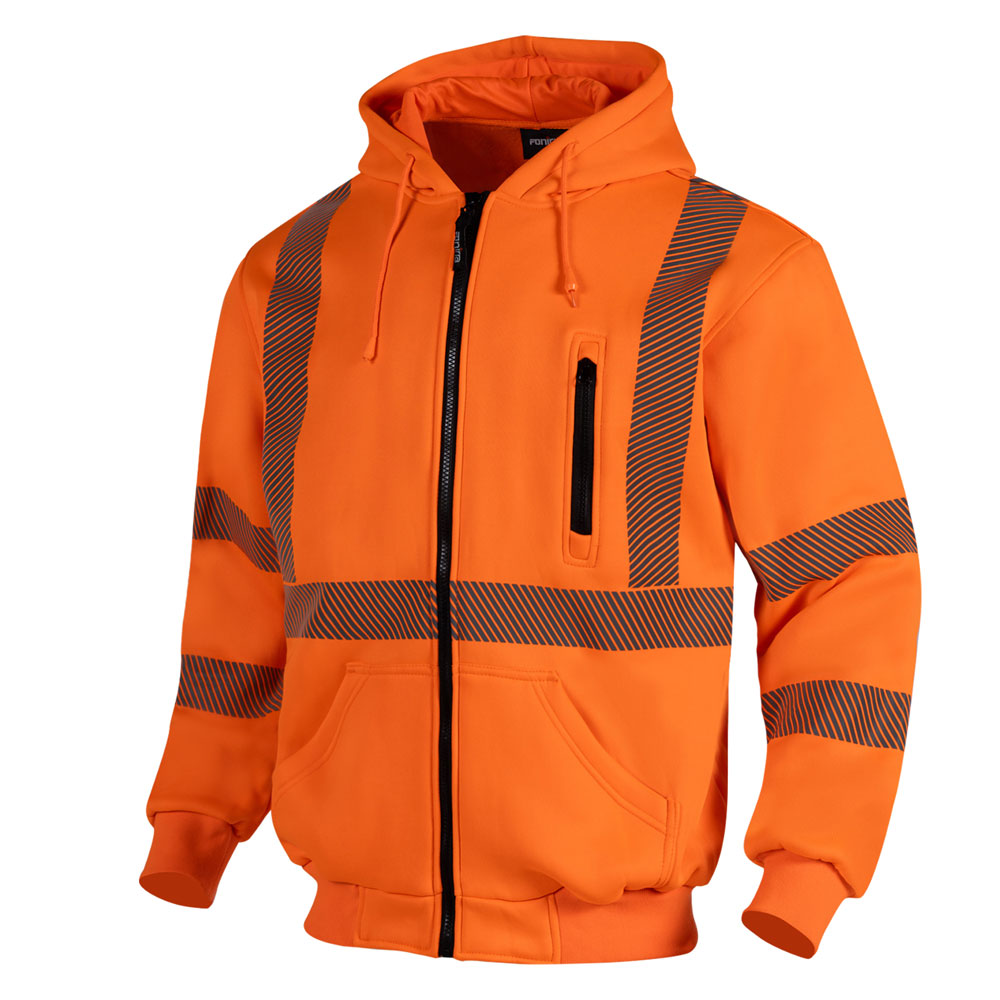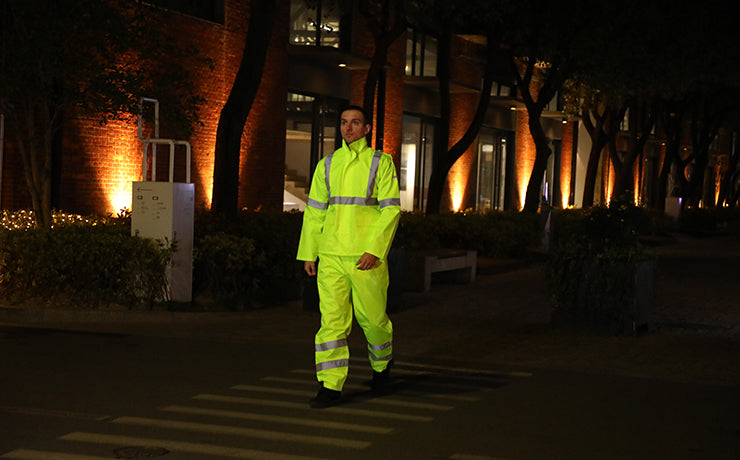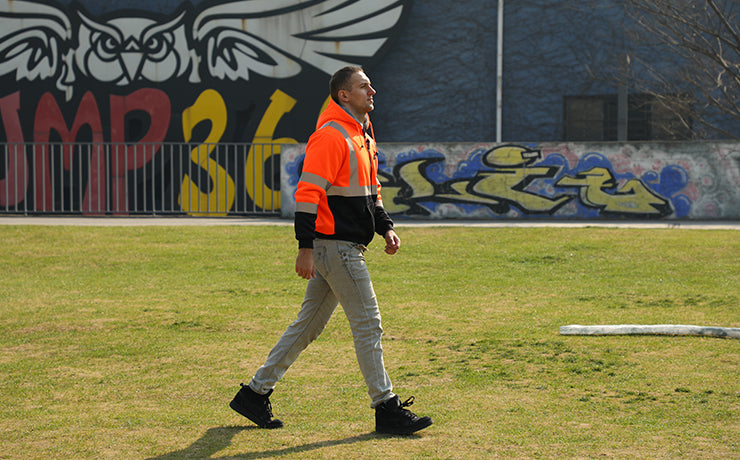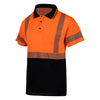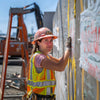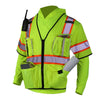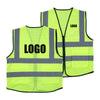OSHA Safety Vest Requirements in Warehouse (For Workers)
Safety in warehouses is crucial. Every day, warehouse workers handle heavy goods, operate machinery, and navigate busy floors. It's a place where being careful can mean the difference between a normal day and a serious injury.
This is where the Occupational Safety and Health Administration (OSHA) steps in. OSHA sets rules to make sure warehouse workers stay safe. They look at everything from how things are stored to what workers wear. Their guidelines help keep everyone in warehouses safe and sound.
Why is Warehouse Safety so Important?

Warehouse safety is vital for several reasons. Firstly, it protects workers from injuries. Warehouses can be dangerous places, with risks like heavy lifting, moving machinery, and busy traffic areas. Common areas where injuries occur include:
-
Loading docks: These can be hectic with vehicles and goods moving around.
-
Storage areas: Here, workers deal with heavy and sometimes unstable stacks of goods.
-
Forklift paths: Collisions or accidents with forklifts are a serious risk.
-
Open loading dock doors: Falls from these areas can lead to severe injuries.
Keeping these areas safe helps prevent accidents, ensuring workers go home healthy every day.
OSHA Safety Vest Requirements in Warehouse
Ensuring the safety of warehouse workers is a top priority, and one of the key aspects of this is adhering to OSHA's safety vest requirements. These requirements are designed to enhance visibility and reduce the risk of accidents, particularly in environments where workers are exposed to moving vehicles and equipment.

OSHA's Guidelines
OSHA mandates that safety vests meet ANSI/ISEA 107 standards, which specify visibility and configuration requirements for high-visibility workwear. The choice of safety vest class depends on several factors, including the worker's proximity to moving traffic, the complexity of the background and weather conditions, and the surrounding lighting conditions.
Different Classes of Safety Vests and Their Uses
-
Class 1 Safety Vests: These are suitable for environments with minimal traffic where speeds do not exceed 25 mph. They're typically used in warehouses, for crowd control at events, or by parking attendants. They offer basic visibility and are suitable for conditions where weather does not significantly impair visibility.
-
Class 2 Safety Vests: Required for medium-risk locations, these vests are used in areas where traffic moves up to 50 mph. They are adequate for light rain and nighttime conditions but may not be sufficient if visibility is substantially impaired. Ideal for warehouses with faster-moving equipment, these vests ensure that workers are visible in both high and low visibility conditions.
-
Class 3 Safety Vests: These are necessary for high-risk locations where traffic exceeds 50 mph and in low-visibility situations such as heavy rain or fog. Class 3 vests provide the highest level of visibility and are essential for workers in extremely hazardous environments.
When and Where to Wear Safety Vests?
OSHA's regulations state that safety vests should be worn whenever workers are in environments that pose the risk of being struck by vehicles or equipment. This includes warehouses, roadways, construction sites, and other similar environments. High-visibility safety vests are crucial for worker safety, making them visible during night and bad weather conditions, thus preventing accidents.
For warehouse workers, the most commonly required safety vests are Class 2 safety vests. These vests are suitable for environments where traffic moves up to 50 mph, which covers most warehouse settings where there is a mix of pedestrian and vehicle traffic, such as forklifts.
At Fonirra, we understand the critical importance of workplace safety, especially in warehouse environments. We are proud to offer a range of Class 2 safety vests that are specifically designed to meet the safety needs of warehouse workers. Our vests are crafted to ensure high visibility and comfort, catering to the unique demands of warehouse operations.
Comprehensive Warehouse Safety Checklist
A thorough warehouse safety checklist is essential to maintain a safe working environment. This checklist covers all aspects of warehouse safety, including clothing and protective gear, and emphasizes the importance of regular safety audits.

Personal Protective Equipment (PPE)
-
Safety Vests: Ensure all warehouse employees, especially forklift operators, are wearing high-visibility vests.
-
Safety Shoes: Mandatory for protecting against foot injuries.
-
Hard Hats: Required in areas with a risk of falling objects.
-
Gloves: For handling hazardous materials and general protection.
-
Goggles: Necessary for eye protection, especially in areas with hazardous substances.
Hazard Communication and Chemical Safety
-
Safety Data Sheets (SDS): Easily accessible for all hazardous chemicals.
-
Labeling: Proper labeling of all chemicals and hazardous substances.
-
Training: Regular safety training on handling and storage of hazardous materials.
Fire Safety
-
Fire Extinguishers: Adequately placed and regularly inspected.
-
Portable Fire Extinguishers: Available and accessible in all key areas.
-
Fire Alarms: Functioning and tested regularly.
-
Emergency Signage: Clearly marked and visible.
General Warehouse Safety
-
Trip Hazards: Regular inspections to identify and remove trip hazards.
-
Storage Racks: Ensure they are stable and items are stored safely, preferably on lower or middle shelves.
-
Forklift Safety: Regular training for forklift operators and maintenance of forklifts.
-
Electrical Hazards: Regular inspection and maintenance of electrical equipment.
-
Fall Protection Systems: In areas with a risk of falls, ensure proper fall protection is in place.
Safety Audits and Inspections
-
Regular Inspections: Conduct regular warehouse inspections to identify safety hazards.
-
Safety Audits: Periodic safety audits to assess compliance with safety standards and procedures.
-
Warehouse Safety Inspections: Detailed inspections focusing on all aspects of warehouse safety.
-
OSHA Inspection Preparedness: Regular checks to ensure readiness for an OSHA inspection.
Emergency Procedures and Training
-
Emergency Procedures: Clearly defined and communicated to all staff.
-
Employee Training: Ongoing training sessions on safety procedures and proper work practices.
-
First Aid Training: Regular first aid training for employees.
Creating a Safety Culture
-
Safety Meetings: Regular meetings to discuss safety issues and improvements.
-
Management Commitment: Continuous involvement and commitment of warehouse managers to safety.
-
Employee Involvement: Encourage employees to actively participate in safety discussions and provide feedback.
Ergonomics and Material Handling
-
Proper Ergonomics: Training on proper lifting techniques and ergonomic practices.
-
Material Handling Equipment: Regular maintenance and safe operation of all material handling equipment.
By following this comprehensive warehouse safety checklist, warehouse managers can ensure a safer working environment, protect workers from workplace injuries, and maintain compliance with health and safety standards. Regular inspections, audits, and training are crucial for sustaining a robust safety culture and keeping workers safe.
Conclusion
Ensuring warehouse safety is a comprehensive process that involves adherence to OSHA standards, regular safety audits, and a commitment to creating a safe work environment. From wearing the right personal protective equipment like Class 2 safety vests to conducting detailed warehouse safety inspections, every step is crucial in safeguarding the health and well-being of warehouse employees.
By following the guidelines and checklists outlined, warehouse managers can create a safer, more efficient workplace, significantly reducing the risk of workplace injuries and accidents. Remember, a safe warehouse is not only about compliance; it's about fostering a culture of safety that values and protects every member of your team.

